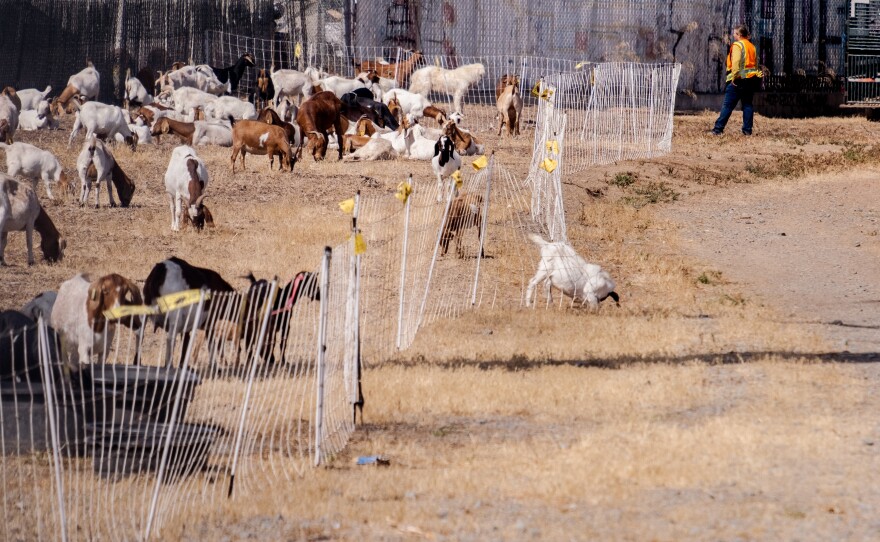
Goat grazing for fire abatement isn't a new idea. But it is a new program for San Diego Gas & Electric.
Last month, the energy company kicked off a goat grazing pilot program in Oceanside.
“One of the last things we want at SDG&E is for our infrastructure to ever cause a fire," said Denice Menard, a communications manager with SDG&E. "So the cool thing is we are letting the goats kind of go out and do their thing and doing what comes natural to them, and that's to eat the weeds.”
Menard said the goats, sometimes referred to as "four-legged lawnmowers," make the perfect wildfire fighting partners. “Those four-legged lawn mowers can get up into areas that traditional lawnmowers just can't get into,” she said.

Hired for the job: Johnny Gonzales, the owner of Environmental Land Management company.
“On the (business) card, it says 'Goats for Hire,' because people didn't know what environmental land management did, so I had to get it out there, 'Yeah, we rent out our goats for fire breaks,'" Gonzales said.
He's worked with goats for over 20 years. Lately, his goats have been grazing near busy roads, businesses, and underneath power lines for SDG&E.
“Not only do they eat the weeds, but they also eat the seeds. So that's one of the benefits people don't think about ... so by eating the seeds, the weeds aren’t popping back up as quickly,” Menard said.

The rented goats are taken to high-risk fire areas to clear out dry brush and keep it from growing back for longer periods of time.
“The goat tool, if you will, is just a reintroduction to what abatement used to be like and reintroducing the goat to get that understory and flash fuel treatment to that better degree,” Gonzales said.
But he said the work takes some time because weeds aren’t the goats' favorite food.
“They start eating first the invasive plants that they’re used to, the Mediterranean, Eurasian, African plants," Gonzales said. "And then after time, if we need an amount of native plant reduction, we hold them a period of time that they start to actually address that. Because our native plants, they eat last, believe it or not, and most of our fire problems are these weeds and grasses.”
Although it takes a little more time, Gonzales said goats are an organic alternative that isn’t just reducing wildfire danger but carbon emissions too.

“It's a lot better than just cutting. You don't have the shaft and duff laying around. They've literally converted it," he said. "And for the carbon aspect, it's still all onsite, it hasn't been transported out. The nutrients are still in the soils and there's no seeds. The goats remove like 99% of the seeds.”
Gonzales said once the goats are done, the land is in better shape to suppress a fire.
“We want the trees and the landscape to be the fire breaks. This is allowing the land to be the suppression," he said. "And if it reaches this area, it'll be quenched out. If it falls into this area, it does not have a starting ignition point.”

Safety concerns are sometimes raised by residents who spot them in suburban areas. But Gonzales said the goats don't mind the urban landscape.
“These goats have been born and raised in this type of environment, in these suburbs," he said. "So they're used to helicopters, and sirens, and police cars coming in, people screaming, other dogs barking. If we were to take the country goat here, they wouldn't be comfortable at all.”
SDG&E has used Gonzales’s goats in Oceanside and Chula Vista to clear brush near power lines. The next site will be in Escondido.
Upon completion, SDG&E will determine whether the pilot program is adopted and continues.






